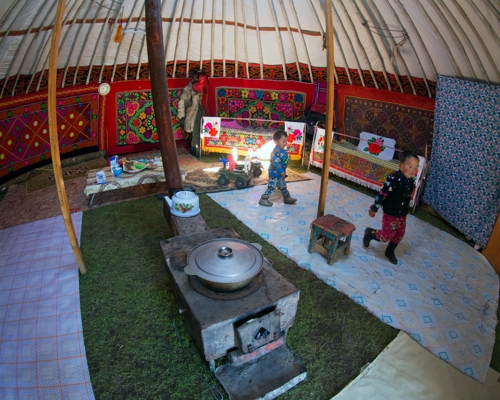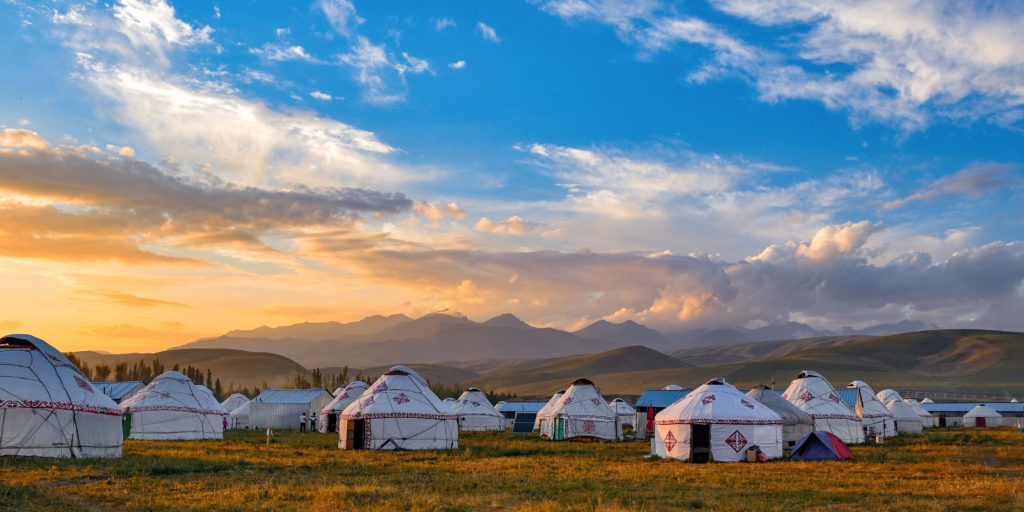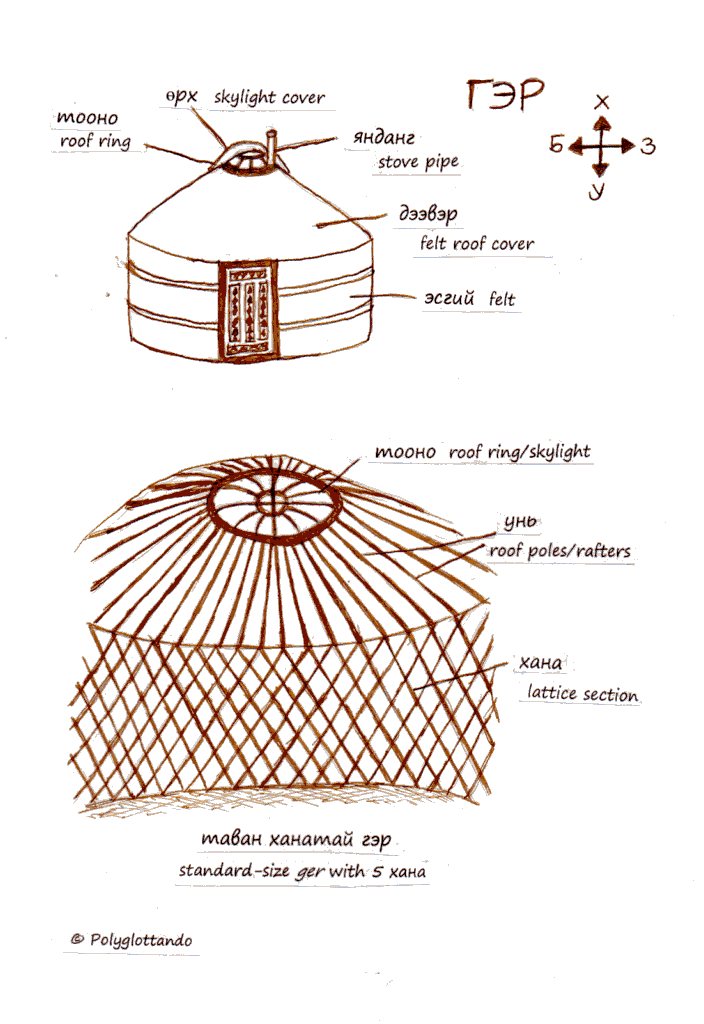A traditional Mongolian Ger or Yurt (from the Turkish languages) is a portable and round tent covered with felt to be used as a dwelling. It has been popular among nomadic groups in Central Asia and still being widely used as a common style of home in Mongolia and other countries.
The Ger is admired for its unique design, structure, functionalities, and incredible way of making the lives of nomads easier. Some people wonder how Ger is portable yet amazingly strong, reliable, and resistant to any kind of weather. Moreover, it is easily disassembled, reassembled, folded, and packed to be carried.
The amazing capability of Ger to contain twenty or more people, yet taking 2-3 hours to be built and disassembled is indeed related to its uncommon structure. In this article, we will look at the structures of Ger in detail.
What Are The Key Parts of Mongolian Ger?
The main two components of Ger are the wooden frame and the felt covering it. The overall wooden frame consists of walls (khana), Uni, Toono, and the door. The felt includes the roof area, as well as Urkh, and Tuurga. On top of them, there are thick, narrow, and long, short ropes and straps are included to hold the pieces together.
The wooden poles consist of sections that are called khana. The khanas are attached to each other with ropes and detached when moving. The size of the Ger depends on how many khanas it is built with. It can be constructed from 4, 5, 6, 8, 10 khanas. Those are the key components of the wooden frame of the ger. In the old days, wealthy or influential people lived in a Ger with more khanas which means bigger.
The central part of the roof is called the crown. The crown is partially or fully open depending on the weather and the small window in the crown are is called toono. Since there is no window, air and sunlight come through the toono. During bad weather like raining or snowing, the toono/small round window is covered with pieces of canvas or felt called Urkh.
The crown is supported by a bagana. (sometimes called poles or columns) A typical Ger has two or three bagana. The gently sloped roof of the Ger comprises separate poles called Uni. It is the central support of the Ger. Depending on the size of the ger, those roof poles (Uni) can number up to 108 (a sacred Buddhist number). Each one fits onto the lattice walls, fixed by straps.
Just like khana and bagana, the door bears the load from the top of the Ger. In ancient times, people used a felt cover as a door and lifted it up to enter. Today, mainly wooden doors are used. Mongolian Ger doors feature a variety of traditional patterns as ornaments. They are either drawn or carved on the doors which are mostly orange colored.
The felt is as important as the wooden frame of the Ger. In winter, extra layers of felt are added to keep the Ger warm. In summer, the felt can be rolled up from the ground level to let some breeze in. The felt is usually made of wool collected from domesticated sheep and goats.
Other Important Parts of the Structure
To keep both the wooden frame held together, there are one or more ropes or ribbons tied around the felt cover. There are certain rules and methods for constructing every piece and detail together.
Another crucial part of the Ger is its fireplace or stove. The fireplace is placed at the center of the Ger with a chimney poking out of the top (toono) Next to the fireplace, there is a fuel box placed to store firewood and charcoal. The fireplace is considered to be the hearthplace of any home as fire is a symbol of sacredness in Mongolia. Therefore, there are some strict rules around the fireplace in the Ger.



